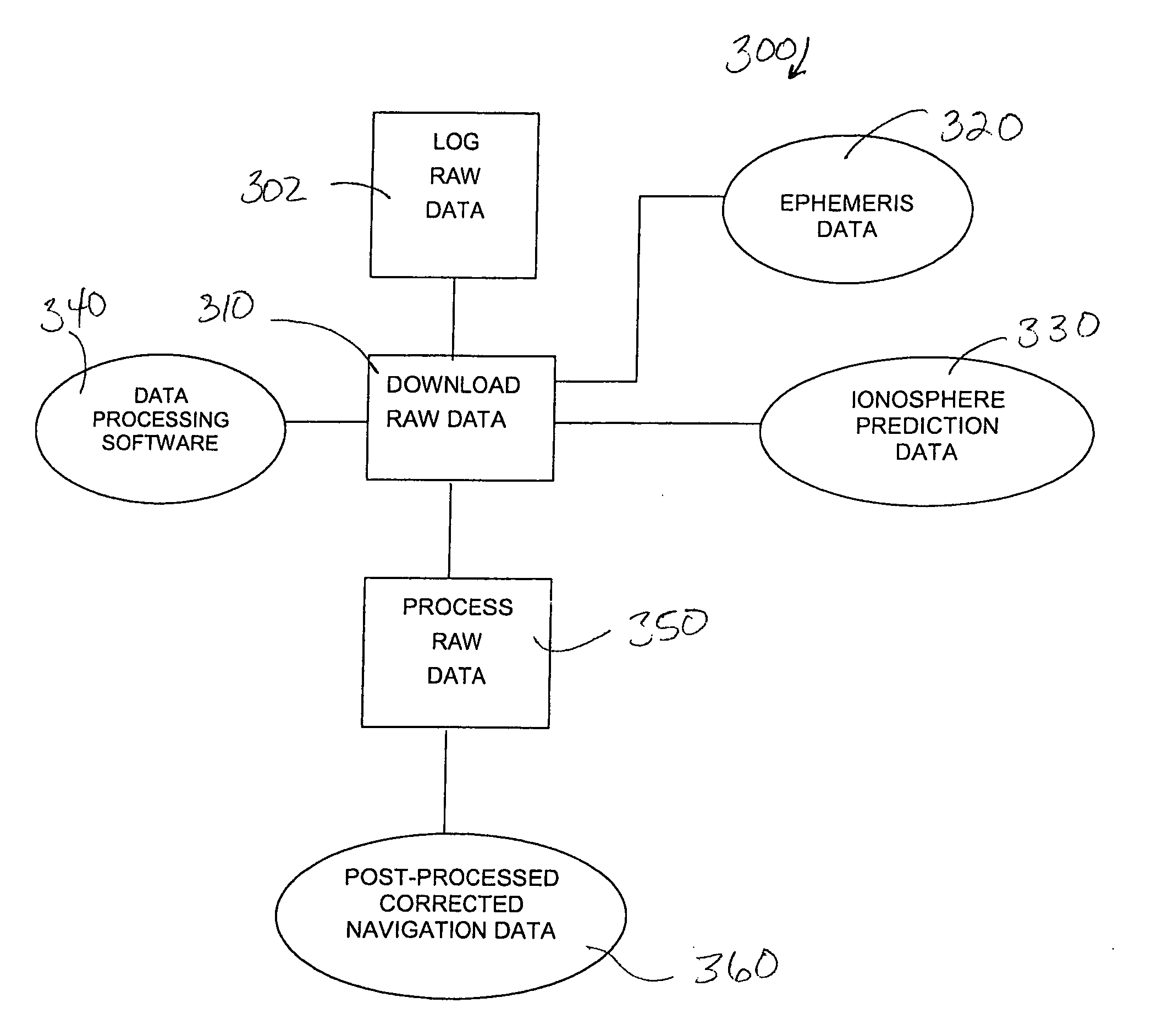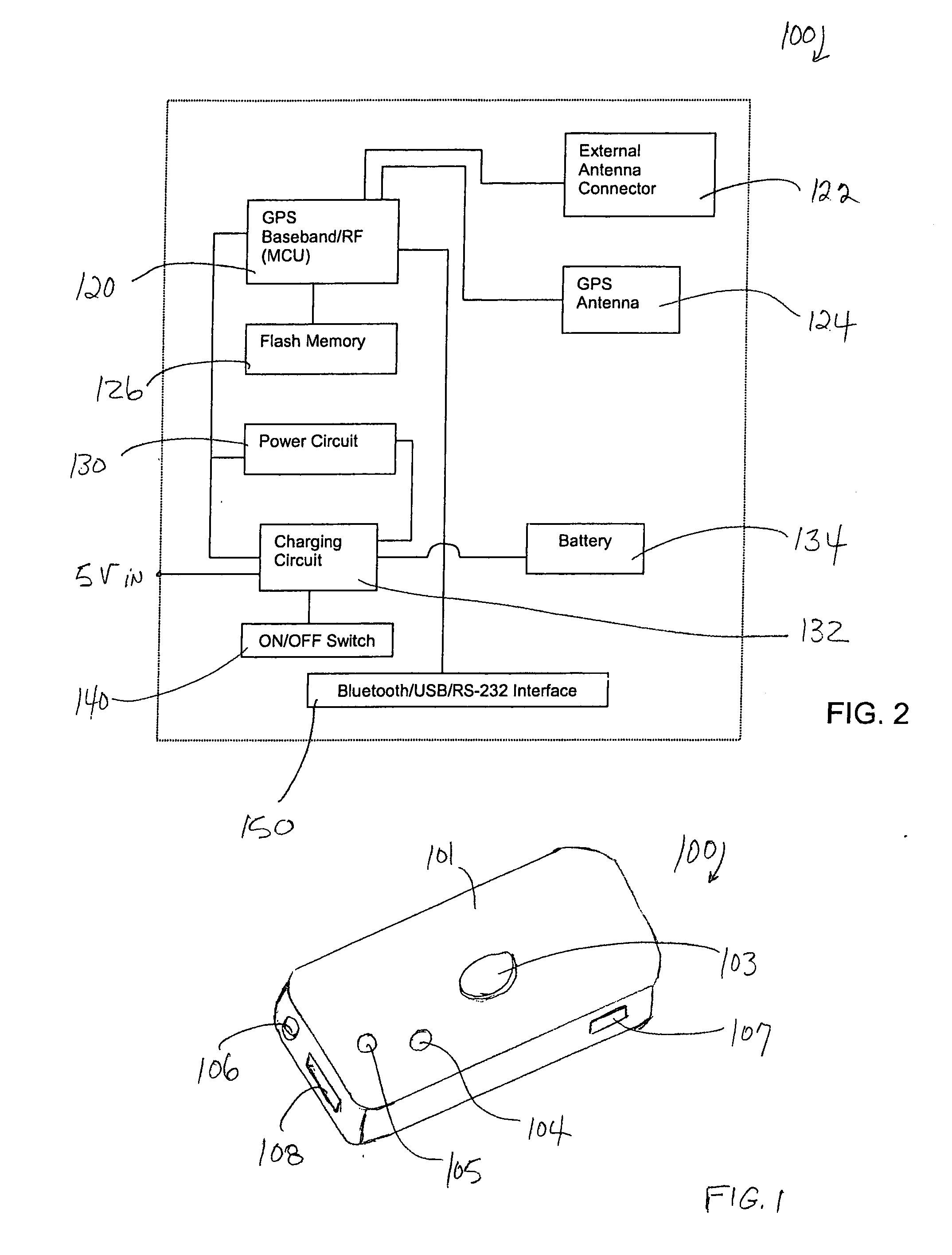Method and device for processing raw GPS data
a technology of raw gps data and processing method, which is applied in the field of global positioning system, can solve the problems of inability to provide the desired accuracy of raw data obtained from the gps receiver, intentional induced errors in range and range rate calculation, and lack of accuracy
- Summary
- Abstract
- Description
- Claims
- Application Information
AI Technical Summary
Benefits of technology
Problems solved by technology
Method used
Image
Examples
Embodiment Construction
[0028]FIG. 1 illustrates a GPS receiver / data logger 100 according to the invention. The GPS receiver / data logger 100 comprises a housing 101, an ON / OFF switch 103, an ON / OFF indicator light 104, a status indicator light 105, and an external connector 106 for connecting the GPS receiver / data logger 100 to an external power source. An external antenna connector 107 is also provided, to enable the user to connect the GPS receiver / data logger 100 to an external antenna. The preferred embodiment of the GPS receiver / data logger 100 is a wireless device and, therefore, requires no external connector for connecting the device to a computing device. It is within the scope of the invention, however, to optionally provide the GPS receiver / data logger 100 with an external connector 108 for connecting it to an external computing device via a USB and / or a RS-232 cable.
[0029]FIG. 2 is a block diagram that illustrates the functional elements of the GPS receiver / data logger 100. A conventional GPS ...
PUM
 Login to View More
Login to View More Abstract
Description
Claims
Application Information
 Login to View More
Login to View More - R&D
- Intellectual Property
- Life Sciences
- Materials
- Tech Scout
- Unparalleled Data Quality
- Higher Quality Content
- 60% Fewer Hallucinations
Browse by: Latest US Patents, China's latest patents, Technical Efficacy Thesaurus, Application Domain, Technology Topic, Popular Technical Reports.
© 2025 PatSnap. All rights reserved.Legal|Privacy policy|Modern Slavery Act Transparency Statement|Sitemap|About US| Contact US: help@patsnap.com



